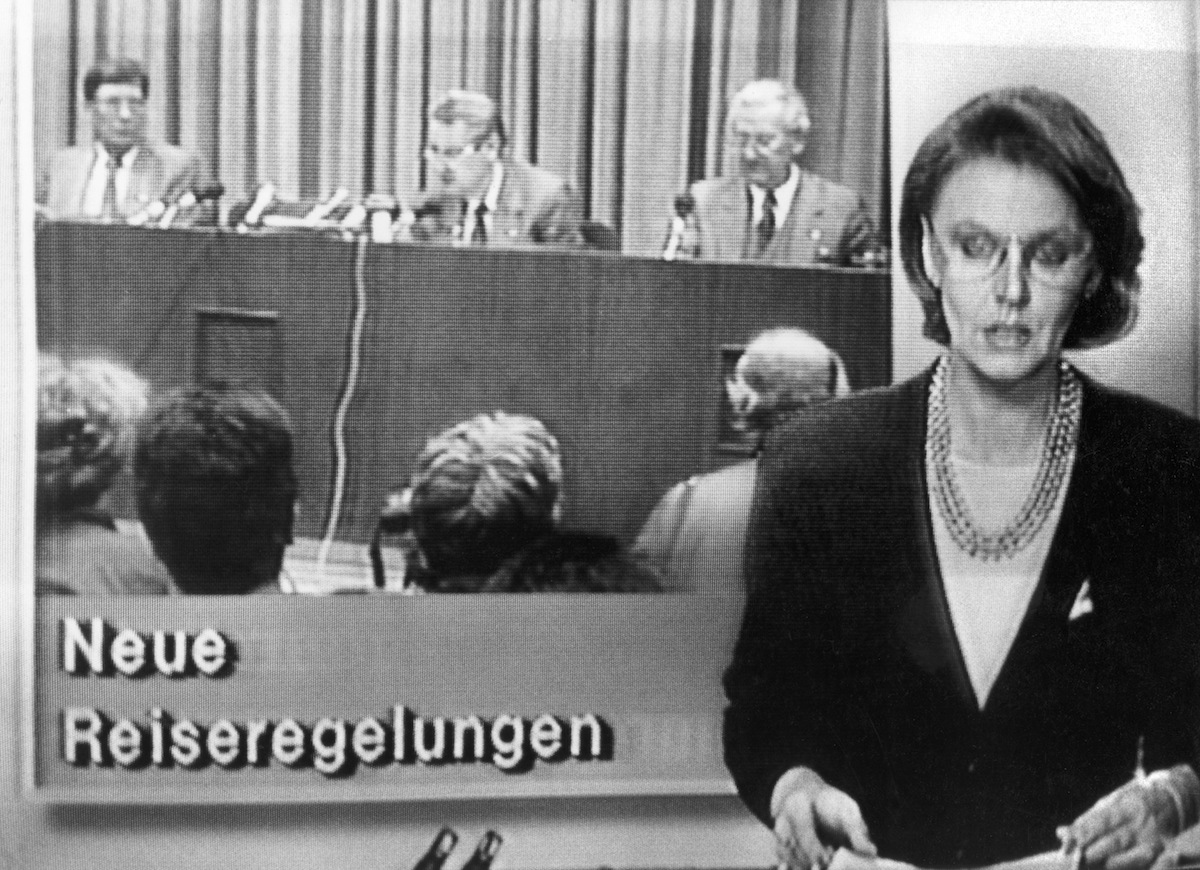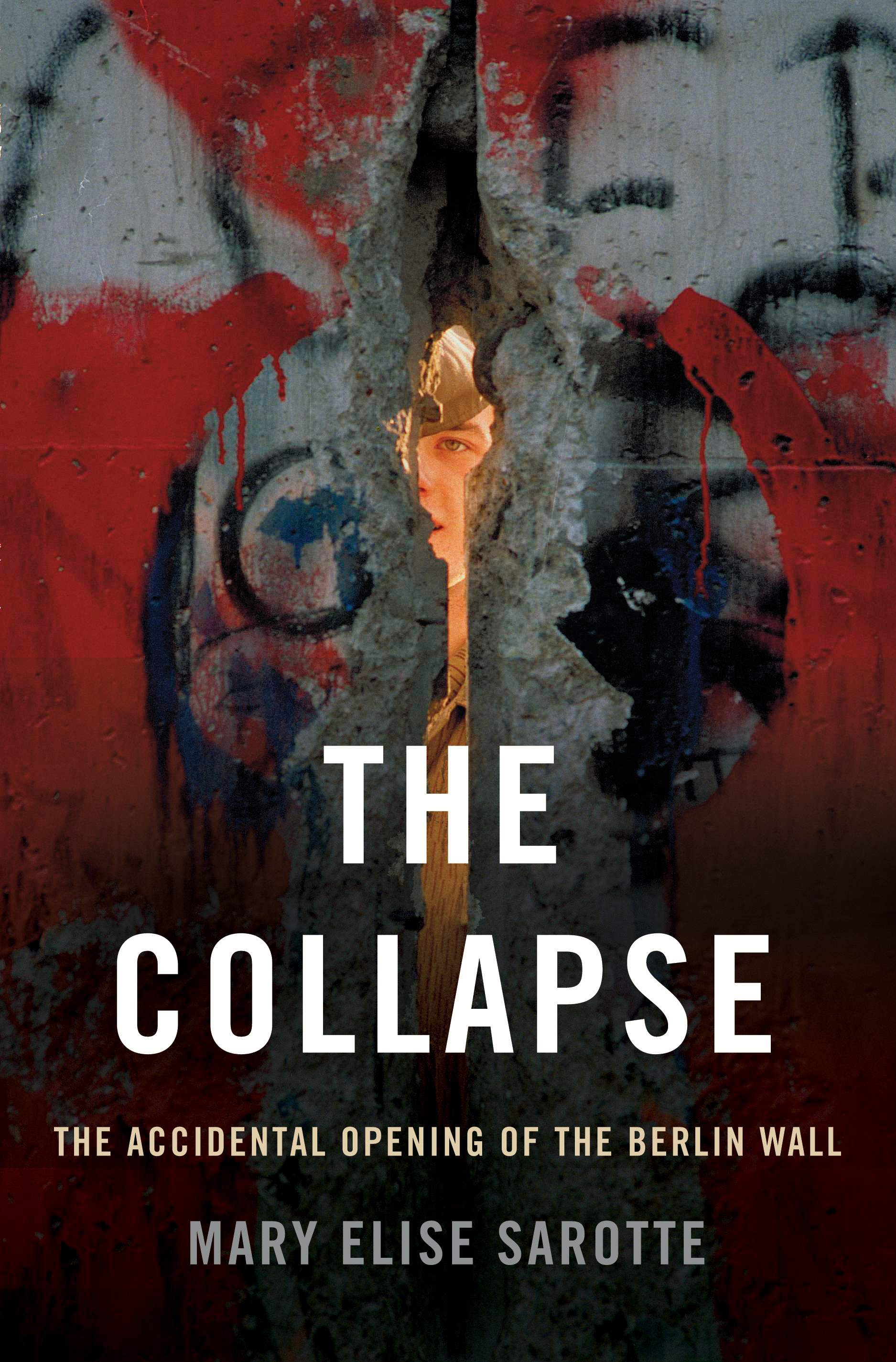
Twenty-five years ago, the Berlin Wall opened — suddenly, joyously, peacefully. On this important anniversary, the world press is once again full of images of this astounding, unexpected development. These images remind readers, viewers and listeners of the excitement of that time.
One of the most interesting aspects of autumn 1989 is the way that the world press not only covered the dramatic events but actually helped to cause them as well. There were three particularly crucial times when members of the media actually help to drive the events that they were covering — moments when the news reports made the news.
The first was not in Berlin but in another East German city, Leipzig. It took place a month earlier, on Oct. 9, 1989. The events in this provincial city near the Czech border may have been physically remote from Berlin, but they were crucial steps on the path to the opening of the Wall a month later.
In Leipzig, as in the rest of the country, the East German ruling regime was trying to maintain its dictatorial control – despite the reforms introduced by the leader of the Soviet Bloc, Mikhail Gorbachev. The East German rulers were not interested in such reforms, however, and brutally repressed protests. Despite the violence, a pattern of regular protest marches had nonetheless emerged. By October, these Leipzig marches were taking place every Monday night. While this fixed schedule meant that protesters knew when and where to turn up, it also meant that the dictators’ security forces also knew when and where to deploy.
It soon became apparent to all involved that the night of Monday, Oct. 9, would be the showdown. The regime planned a Tiananmen-level event. It hoped not only to suppress all dissent but also to keep the suppression quiet. The dictators anticipated success on both counts, having at least 8,000 armed men at their disposal and full control over the state media.
Meanwhile, dissidents knew that they had two jobs: they had to protest — and they had to get word about their protest out to the West. So, even as opposition leaders made plans for the enormous march that night around the ring road encircling the heart of Leipzig, another group of dissidents made their own plans: to film the protest march secretly, despite heavy surveillance, and then smuggle the video out to the West.
The night of Oct. 9 turned out to be a major triumph for the protesters. Their sheer numbers — at least 100,000 — intimidated the security forces, who withdrew without using their weapons. And the secret videotaping succeeded as well. Protesters smuggled a videocassette showing the security forces’ retreat out to West German television stations, which broadcast it on news shows that could also be received in East Germany. The images made plain to ordinary people throughout the country that their regime was in retreat, something they would not have learned from their own media. Learning of the retreat, more people gained the courage to protest in their own hometowns, thus increasing pressure on the dictators. It is not too much to say that these press reports helped to hasten the end of the dictatorship.
The second time the world press both covered and influenced events was on the night of Nov. 9 in divided Berlin. That night, coincidentally the anniversary of the major Nazi pogrom against Jews known as “Kristallnacht,” was about to become famous for another reason. At a press conference televised live, a member of the East German Politburo announced what were meant to be minor changes to travel regulations. They were only supposed to sound good — not to produce actual, significant change.
That would have been the case, had he not botched the announcement. In and of itself, a Politburo member making a hash of a statement was nothing new. His mistakes would have been insignificant, but for the presence of the world media at the press conference where he made them. Before the Politburo member even finished speaking, wire reporters — the people who got the news out fastest in the pre-internet era — rushed out of the room to file reports saying that the Berlin Wall was open. It wasn’t, but average East Germans heard this coverage from Western broadcasters. Even though many of them doubted that it was true, they decided to go to the checkpoints in the Berlin Wall and on the border between the two Germanies to push the matter. Had the media reports not aired, this would not have happened, so the media once again drove the news.
The third and final impact of the media on events was the most significant. The border guards at the checkpoints in the Berlin Wall, stunned by the press conference, double-checked with their superior officers whether what the Politburo member had said was accurate. In return, they received confirmation that the Wall was still firmly closed. Yet the crowds kept coming and growing larger. Overwhelmed by the sheer number of people demanding to get out and fearing that they might be overrun, the guards decided at one particular border crossing, Bornholmer Street, decided to open the gates under their control.
This was their individual decision; they had no regular communication with the other checkpoints. Working for a highly centralized regime, they were supposed to communicate with their superiors, not improvise orders among themselves. The Bornholmer opening might have stayed isolated — but, once again, for the impact of press coverage.
Images of East Germans flooding through the Bornholmer crossing quickly hit the airwaves. Seeing these images and hearing reports of them, other border guards at other crossings became motivated to open their own border crossings as well. In the wee hours of Nov. 10, in an ad hoc, uncoordinated fashion, one border crossing after another opened.
Thus, as the world continues to celebrate the legacy of these happy developments, it should remember the important impact of journalists, who — at times unwittingly — helped to cause the peaceful, successful opening of the Berlin Wall. Put bluntly: journalists in 1989 both covered and helped to cause a peaceful revolution. One can only hope that they can be so helpful to the peaceful protesters of today.

Mary Elise Sarotte is the author of the new book The Collapse: The Accidental Opening of the Berlin Wall. She is Dean’s Professor of History at the University of Southern California and a visiting professor of government and history at Harvard University.
More Must-Reads from TIME
- Cybersecurity Experts Are Sounding the Alarm on DOGE
- Meet the 2025 Women of the Year
- The Harsh Truth About Disability Inclusion
- Why Do More Young Adults Have Cancer?
- Colman Domingo Leads With Radical Love
- How to Get Better at Doing Things Alone
- Michelle Zauner Stares Down the Darkness
Contact us at letters@time.com



